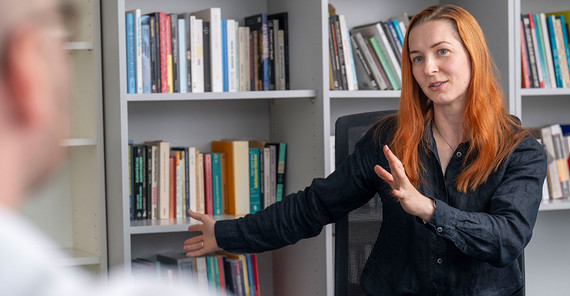Abracadabra for …
… the pocket
In the digital age, magicians are also present on YouTube, Instagram, and TikTok. They make cards disappear or coins appear or let matches float in the air on the smartphones of their many thousands of followers. Some magicians like to call close-up magic the “champions league” of magic because the audience is very close – and believes they see everything. A well-known example is mentalist Uri Geller, whose mental powers are known to make any spoon go weak. “The real trick of close-up magic is distraction,” Rein says. “You have to make sure that the other person looks the other way at the right moment.” Or you must skillfully manipulate your tool. This is only rarely used, but there are all the triter wisecracks. Acts like Marv the Magician not only reveal how their tricks work for clicks and likes but also prime their male target group with gendered stereotypes: “You’ll get her number with this magic trick,” because “girls love this magic trick.” As early as the 19th century, magicians exposed the tricks of others, also in order to put their female competitors out of business. “The spiritualist mediums were mostly women who performed tricks such as mind reading or conjuring up spirits,” Rein says. „Stage magicians then exposed these spiritualistic acts as tricks in front of an audience and portrayed the media as morally depraved.”
Presto for …
… the paying audience
While our mobile devices bring the alleged magic free of charge and always at arm’s length, professional magicians in the 19th century had a problem: Close-up magic doesn’t work in front of a sold-out audience because the distance to the audience is too far. New tricks with larger equipment were needed, which is why a whole range of technical devices found their way into magicians’ repertoire in the early industrial age. Trapdoors, lifting machines, rotating mechanisms – even today, a team of engineers, craftsmen, and inventors is always behind the spectacular illusions of stars like the Ehrlich Brothers. „All stage magic that we can see today from stars like the Ehrlich Brothers was created in the 19th and early 20th centuries,” says cultural scientist Katharina Rein. The famous cabinet of ghosts already existed in the 1830s. The walk through a wall? An invention by P. T. Selbit from 1914. Mind reading while blindfolded? That’s old hat. Who adopted which trick from whom and when is not always easy to trace, even for experts, since historical records are rare and patents for magic tricks are sometimes deliberately peppered with misinformation. After all, it was and is important to protect the sacred professional secrets.
Hocus pocus for …
… adrenalin junkies
Magic art experienced a radical break after World War I. Occultism, the mystical, but also the delight and naive joy of the miraculous disappeared from the stage and reappeared in the new medium of film. Film pioneer Georges Méliès (1861-1938), for example, wowed the audience with the first special effects. “Méliès was a magician and ran the most important Parisian magic theater for several decades,” says Rein, who has been working as a research associate at the Chair of Media Theory/Media Studies since 2021. “His fantastical settings were filmed magic shows.” Meanwhile, weirder, and riskier things were happening on stage. “It was the beginning of brutal illusions,” says the 38-year-old. Because the audience, traumatized by the war, craved ever more spectacular stunts. The “human cannonball,” the unleashing in a water tank or “the woman sawn in half” became box office hits. From the middle of the 20th century, sensationalism found its media equivalent in television productions. The success of legendary magicians like Houdini, Siegfried and Roy, or David Copperfield also lies in the fact that the (apparent) risk to life and limb provides plenty of thrills. Artists like Copperfield sometimes use camera tricks for TV shows. For Rein, however, the focus is on the type of staging. She prefers not to know how the tricks work technically, for one simple reason: “That would be pretty boring, and the shows would automatically be less fun.”
Book recommendation
Techniques of Illusion: A Cultural and Media History of Stage Magic in the Late Nineteenth Century by Katharina Rein was published in 2020 and received the Anniversary Prize for Young Researchers of the Buechner Publishing House. It is the first cultural-scientific examination of late 19th century stage magic.
Katharina Rein is a research associate at the Chair for Media Theory/ Media Studies at the University of Potsdam.
This text (in german language) was published in the university magazine Portal - Zwei 2024 „Europa“ (PDF).

